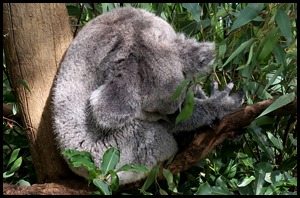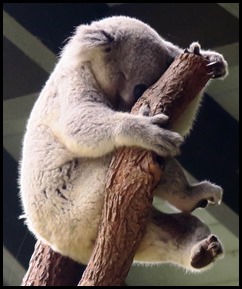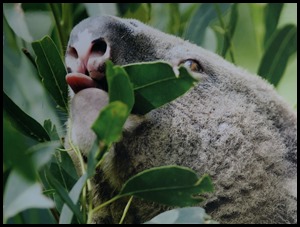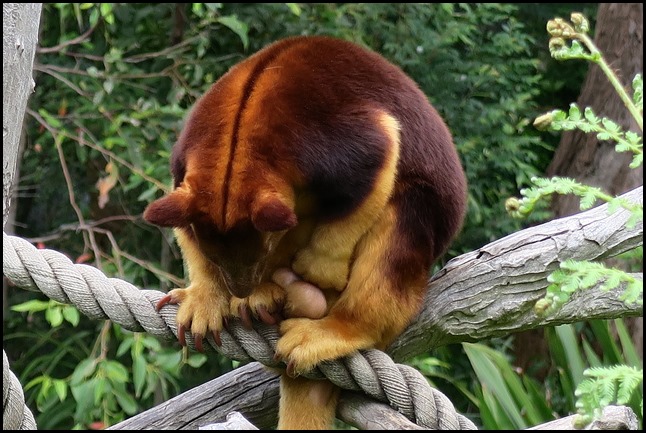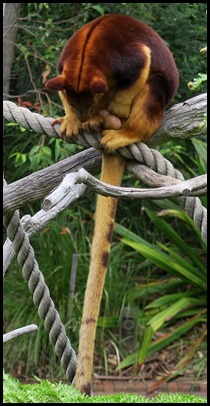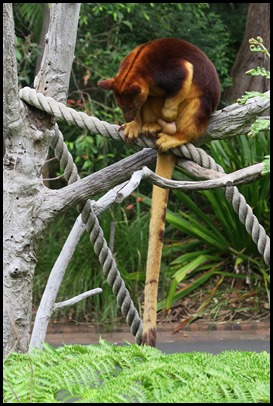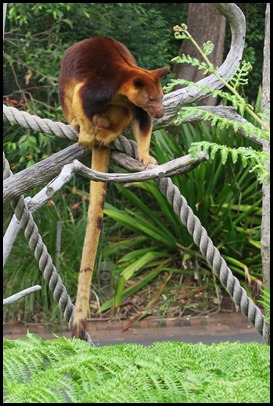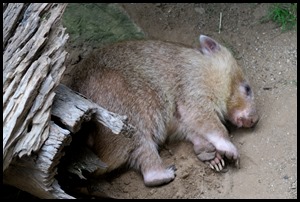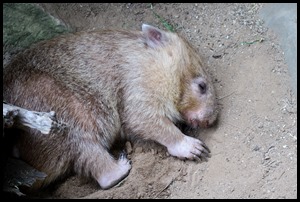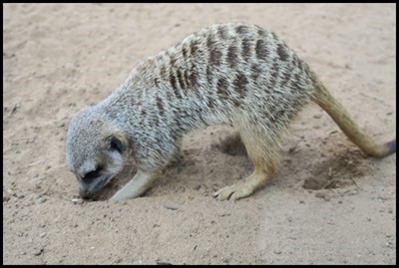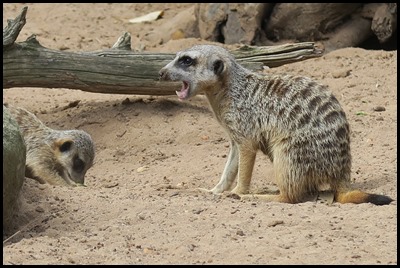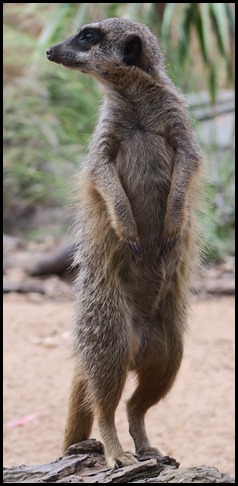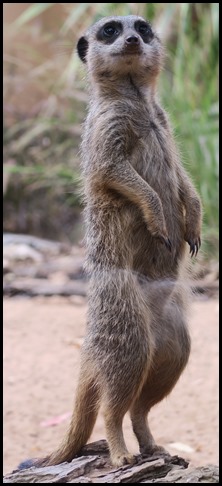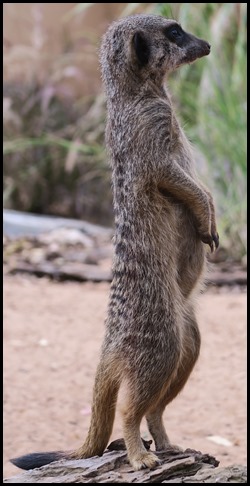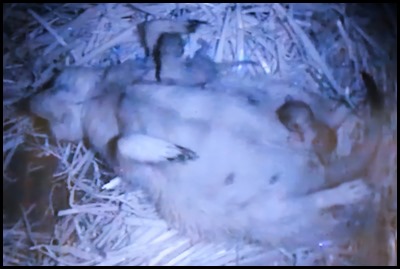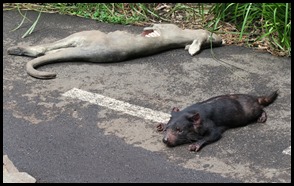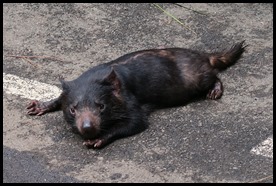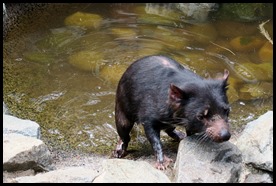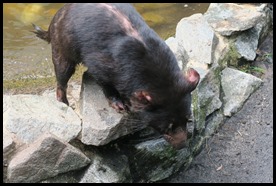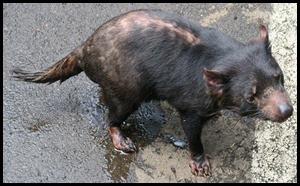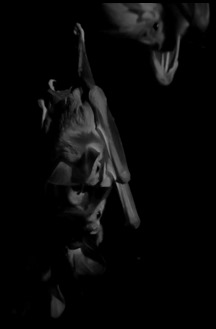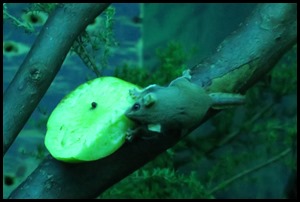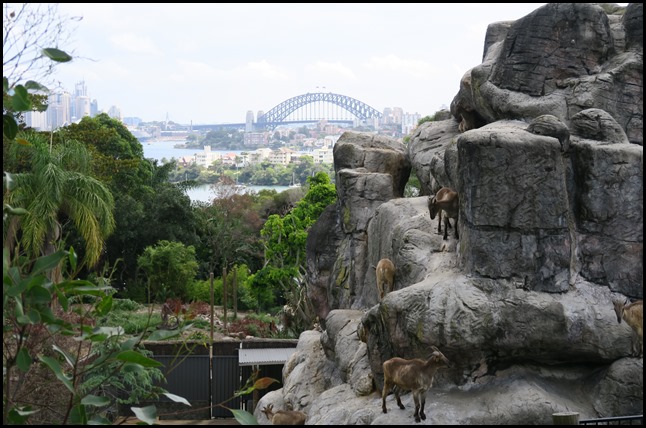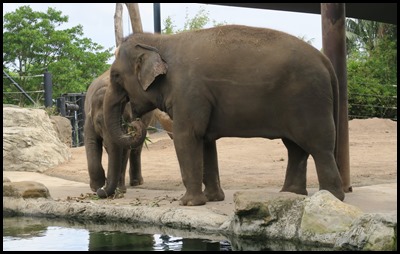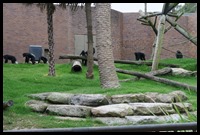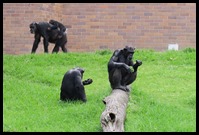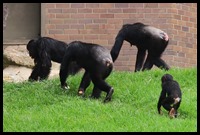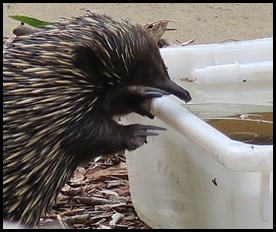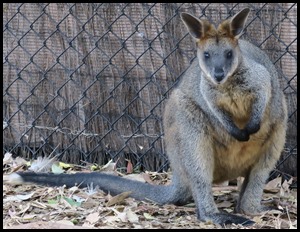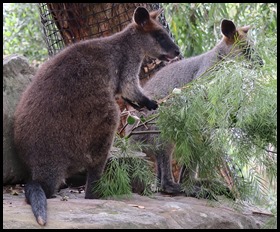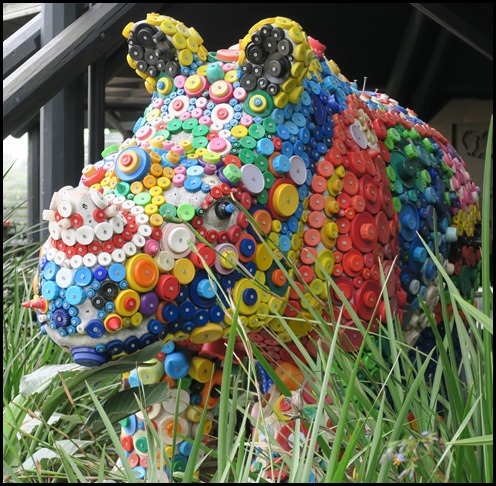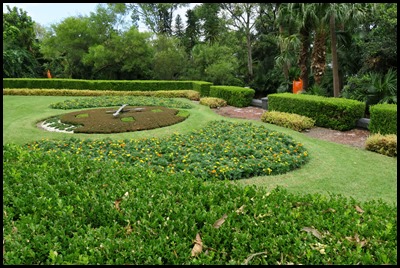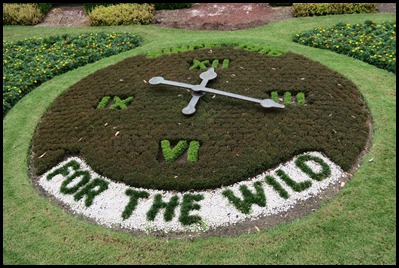Taronga Animals

|
Just Some of the Animals We
Saw at Taronga Zoo
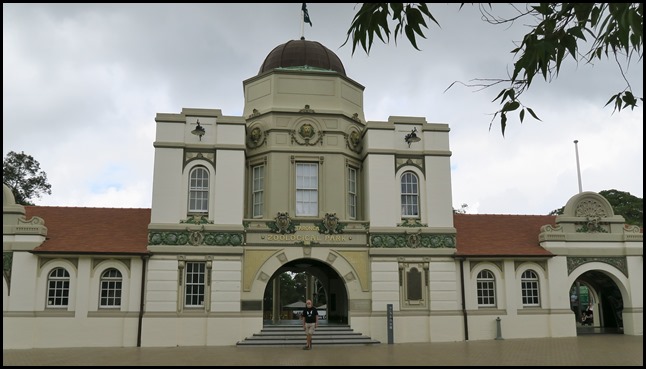 Taronga Zoo on the shores of Sydney Harbour is a short bus ride to the suburb of Mosman. Off we went this morning full of enthusiasm. The zoo officially opened on the 7th of October 1916 and is now managed by the Zoological Parks Board of New South Wales, under the trading name Taronga Conservation Society, along with its sister zoo, the Taronga Western Plains Zoo in Dubbo. Divided into eight zoogeographic regions, the fifty-two acres of incredibly valuable real estate is home to over four thousand animals of three hundred and forty species. information centre. In February 2003, it became the second zoo in Australia to breed the platypus. At 3.04 am on the 4th July 2009, Thong Dee, an Asian elephant, gave birth to a male calf named Luk Chai. He is the first calf ever born in Australia. Thong Dee, and his father Gung, were two of the eight elephants imported into Australia to participate in the Australasian Conservation Breeding Program. What follows is a tiny amount containing our favourites.
Only one place to begin, just like the Sydney Harbour Bridge – how many pictures can you take ??? Never enough.
What a beautiful jacket. The Goodfellow’s Tree-kangaroo (Dendrolagus goodfellow buergersi). The ancestors of kangaroos and wallabies hopped across the ground much as they do today. However, some of these early kangaroos took to the trees – perhaps they were escaping predators or looking for food. Over time they adapted to their new habitat above ground. Today, tree-kangaroos are good climbers due to their strong forelegs, padded soles and sharp curved claws.
This little orphaned lady tried really hard to get up and say hello, but it was just too much effort, so back to sleep as wombats should do during the day.
Once here, it was very tough to drag ourselves away. Baby scruffing about, mum not far and dad on guard. I mentioned to their keeper that a life-long-Attenborough-moment is to lay on the ground and have one of these delightful creatures use me as a watch post. “Just watch the claws, they are real so-and-so sharp”........Mmmm.
On the live video feed we watched a meerkat mum and babies. Arrrrr.
The lone Tasmanian devil, newly arrived, lay on his pretend road next to his pretend roadkill. Then he bimbled over to his little pool for a soak. He looked lost and alone but very necessary to keep these ‘insurance animals’ in zoos. It would be awful for Tassies to become extinct.......
We spent a while with the fascinating nocturnals.
Goats with a view worth................
Barbary Sheep (or Aoudad) - Ammotragus lervia - are rock or mountain sheep native to North Africa and parts of the Sudan. They have short, bristly reddish brown coats and both males and females have a heavy fringe of hair on their throats and incredible eyesight. Both sexes have powerful horns that have numerous fine rings on them and they curve into a semi-circle over the back. The colour of their coat helps them to remain camouflaged against the sandy rocks of the North African mountains. These very handsome chaps can jump six feet from a standing start. The newborns are capable of traversing rocky hills just (almost immediately) after being born.
Asian elephants, volcanoes, earthquakes and oceans have something in common, they all transmit sound at frequencies below the range of human hearing. Elephants use infrasound to communicate with each other in thick forests. Infrasound id not easily blocked by objects, travelling in waves it can bend over and around tree trunks and branches.
We sat to watch the chimps treat time. The keepers lob fruit over the wall and within minutes the troop appear, enjoy, collect and bimble back from whence they came.
Not the prettiest rear end but mum and baby were very cute.
ALL IN ALL A WONDERFUL VARIETY IN GOOD CONDITION STUNNING POSITION FOR THE INHABITANTS |
